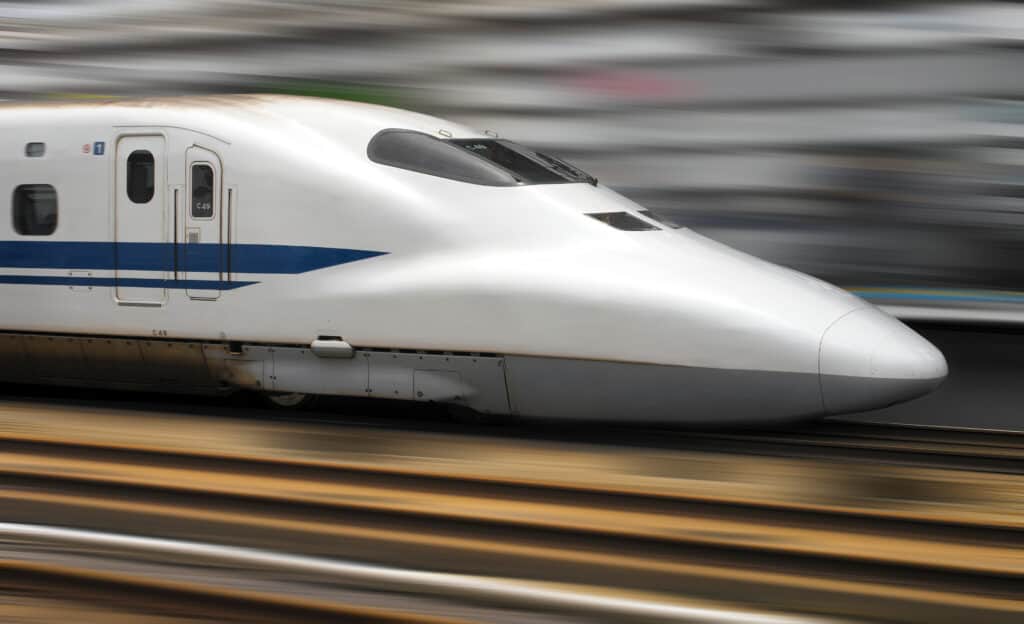There is an island in Japan that is completely overrun by rabbits. In some cases, this would be a problem. However, in this case, the Japanese government has seized on a wonderful opportunity for rabbit lovers. Tourists can actually visit Okunoshima, the rabbit island of Japan. Keep reading to learn about the unique history of this island and how you can visit.
Where is Okunoshima?
The island is located about 2.5 miles (or 4 kilometers) off the coast of Japan in the Hiroshima Prefecture. It is officially part of the town of Takehara. It is part of the Setonaikai National Park, also known as Inland Sea National Park in English. This park is comprised of the 3,000 islands in the Setouchi Islands.
How Okunoshima Became a Rabbit Island

Okunoshima went from a military background to being one of the cutest islands in the world.
©Rita_Kochmarjova/Shutterstock.com
The name Okunoshima means “Black Island.” It might get this name from the way it appears from afar, covered in dark vegetation. Okunoshima is also sometimes referred to as Usagi Shima, meaning “rabbit island,” but that is not the official name.
Okunoshima has a complicated history. Prior to the 1900s, a few families lived on the island, earning their living by fishing. During the Russo-Japanese War, which spanned from 1904-1905, Japan built ten forts on the island, taking it from a peaceful and sparsely populated locale to a military-minded base.
Starting in 1925, the same year Japan signed the Geneva Protocol which prohibited the use of chemical weapons, Japan’s military started using the island for a secret chemical weapons program. In 1927, the Imperial Army Institute of Science and Technology built a chemical plant to make tear gas and mustard gas.
The army chose the island for three reasons. First, it was a safe location due to its distance from major cities. Because it was off the coast and relatively small, it was easy to keep what they were doing there a secret. And lastly, because it already had ten forts, it was easy to guard and keep secure.
Everyone on the island, including those working at the plant, had to keep the project a secret, despite the hazards. Many who worked there suffered from exposure to toxic chemicals. After the Second World War, allied forces dismantled the plant, and governmental forces destroyed its documentation. It took a few decades for the government to recognize the harm caused by the plant, and offer aid to workers who had been affected negatively.
In 1988, in an effort to intentionally expose the secrets of the island, the government created and opened the Okunoshima Poison Gas Museum. The island is an interesting visit for history lovers and rabbit lovers.
Where Did All The Rabbits Come From?

This could be you on Okunoshima!
© Sasiistock/ via Getty Images
Some speculate that the rabbits on Okunoshima come from rabbits used in testing when the island was a factory for chemical weapons. However, it is rumored that the allied forces who dismantled the factories also destroyed those rabbits, so that is not likely true.
After World War II, the island became a park. Rabbits were released intentionally to improve the park, and the rabbits present today are the descendants of those rabbits, as well as other rabbits that have been intentionally released there over the years.
How to Visit Okunoshima

Many travelers take the Shinkansen (bullet train) from Tokyo to Hiroshima to reach rabbit island.
©Steve Allen/Shutterstock.com
To get to Rabbit Island, you will first need to get to Japan. Most people fly into Tokyo. From Tokyo, you can then fly to Hiroshima Airport or take the bullet train to Mihara Station. If you decide to fly to Hiroshima Airport, you can take a taxi to Tadanomi, where you can get the ferry to Okunoshima. From Mihara Station, it is about 20 minutes to Tadanomi via public transportation.
Many people take the bullet train from Tokyo to Hiroshima instead, so they can enjoy the numerous historic sites and tourist attractions of that area. From Hiroshima Station, there are several public transit options to reach Tadanomi, most of which take about an hour. From Tadanomi, it is only a 15-minute boat ride to the island.
You can bring your vehicle to Okunoshima on the ferry. Ferry ticket prices range from 180 Yen for a child to nearly 10,000 Yen to bring a truck onto the ferry. You can also bring bicycles and motorcycles on the ferry for an additional fee. At the Tadanomi port, there is a luggage storage service for 500 Yen per day, as well as free WiFi.
Rabbit Island Rules
Because this island is such a special place, there are several rules to keep both people and rabbits safe.
- Do not feed the rabbits near the road. If they get used to being close to the road, they can get run over by bicycles and foot traffic.
- Avoid feeding rabbits any human foods.
- Do not handle the rabbits. They are wild and scare easily if you try to hold them.
- Do not chase the rabbits. Rabbits get very scared. They can get hurt or even have a heart attack from their fear. Wild rabbits don’t get to go to the vet, so it’s important to let them be peaceful on the island.
- Throw out rabbit food leftovers responsibly. Leftovers sitting out may attract crows which can disrupt the ecosystem of the island.
- It is against the law to take a rabbit home with you.
What Can You Do On Rabbit Island?

Rabbits are most active near sunrise and sunset.
©Robert Adamec/Shutterstock.com
Rabbit Island is a great place for a day trip, but there is also the possibility of an overnight stay. There is a hotel on the island that also has a restaurant and hot spring to enjoy. There is also a campsite for a more rustic experience. Rabbits are crepuscular, so they are most active at dawn and dusk. The twilight hours could be the best times to see as many rabbits as possible, and this is only possible with an overnight stay.
In addition to viewing rabbits, you can also:
- Purchase rabbit food at the port and feed it to the rabbits. Don’t forget to bring your bag back to the port and exchange it for a special Rabbit Island postcard and stamp.
- Rent bicycles and cycle on the many trails on the island.
- Walk on the scenic walking paths. Taking the trail to the island’s summit leads to beautiful views of the surrounding ocean and islands.
- Visit the Poison Gas Museum and other historic buildings.
- Go to the island’s beach.
- Get a coffee at the island’s cafe and gift shop.
- Visit the lighthouse.
Okunoshima is a wonderful travel experience whether you decide to visit because you adore rabbits, enjoy history, or are simply looking for a unique travel opportunity.
The photo featured at the top of this post is © Y.S graphic/Shutterstock.com
Thank you for reading! Have some feedback for us? Contact the AZ Animals editorial team.







